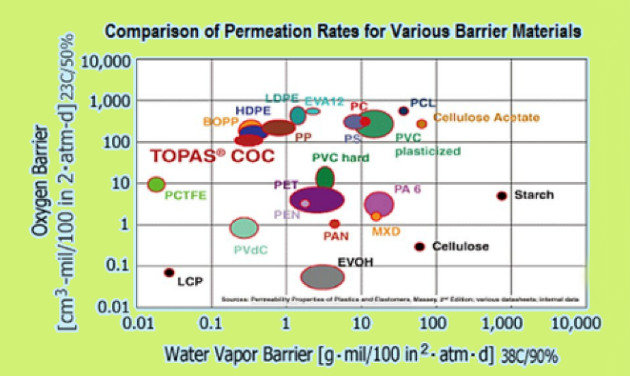Garfield43
Well-Known Member
- Joined
- Mar 6, 2021
- Messages
- 150
- Reaction score
- 56
Looks like William's has it back in stock so I can order (hopefully) the last thing I need to set up a keg and refurbish my jockey boxes.
For my keg set up I will be going from a 2.5 gallon Corny to a disconnect-to an adapter - to a 690SS Flow Control Perlick faucet.
The faucet will be inside the mini fridge with the mini keg so it should stay cold and not grow bacteria as fast. Also the first pour will be through a cold faucet so that should help with extra foam. All I am missing for it is a gas line from the regulator to the disconnect that will hook to the keg.
This brings up the 2 jockey boxes I bought. I have to change all the lines in them becase they were put away dirty the last time they were used. They have 2 different size lines. The gas line is bigger.
From what I have read 4mm by 8mm is the size to use on liquid at least 90% of the time. I am not trying to pump beer up from the basement so the 4mm by 8mm is the size I need if I have read correctly.
This brings up the gas. The fittings on my regulator are much bigger than what comes on the disconnects. I have read where Day Tripper explained how you can heat and stretch the 4mm hose to fit pretty much whatever you need.
I am way too lazy for that.
Would it hurt anything to just buy a roll of 6.5mm by 9.5mm for the gas?
I am using hose clamps in stead of Duo Tights like all the cool kids use.
Becase of this outside diameter really isn't an issue.
I apricate saving money but stretching the hose sounds like a pain.
The bigger hose will be much easier to attach to my regulators and I think it will clamp town to fit the disconnects.
Does this make sense to people who have actually done this?
I know too large of beer hose can cause problems.
I would think if you were getting too much CO2 becase of a larger hose diameter you could just lower the pressure slightly and that would lower the volume.
Then again I have never done this before and would appreciate advice from those that have.
Likewise I would appreciate a link to the simplest to use hose length calculator.
If there is some length wat works most of the time in most cases I would like to know that.
I really don't want to get in the weeds with the physics of gas and calculating how restrictive the inside of the hose is per meter.
As I mentioned before, I'm lazy. What's the simplest thing I have do I have to do to make it work, that what I want to know.
Thanks.
For my keg set up I will be going from a 2.5 gallon Corny to a disconnect-to an adapter - to a 690SS Flow Control Perlick faucet.
The faucet will be inside the mini fridge with the mini keg so it should stay cold and not grow bacteria as fast. Also the first pour will be through a cold faucet so that should help with extra foam. All I am missing for it is a gas line from the regulator to the disconnect that will hook to the keg.
This brings up the 2 jockey boxes I bought. I have to change all the lines in them becase they were put away dirty the last time they were used. They have 2 different size lines. The gas line is bigger.
From what I have read 4mm by 8mm is the size to use on liquid at least 90% of the time. I am not trying to pump beer up from the basement so the 4mm by 8mm is the size I need if I have read correctly.
This brings up the gas. The fittings on my regulator are much bigger than what comes on the disconnects. I have read where Day Tripper explained how you can heat and stretch the 4mm hose to fit pretty much whatever you need.
I am way too lazy for that.
Would it hurt anything to just buy a roll of 6.5mm by 9.5mm for the gas?
I am using hose clamps in stead of Duo Tights like all the cool kids use.
Becase of this outside diameter really isn't an issue.
I apricate saving money but stretching the hose sounds like a pain.
The bigger hose will be much easier to attach to my regulators and I think it will clamp town to fit the disconnects.
Does this make sense to people who have actually done this?
I know too large of beer hose can cause problems.
I would think if you were getting too much CO2 becase of a larger hose diameter you could just lower the pressure slightly and that would lower the volume.
Then again I have never done this before and would appreciate advice from those that have.
Likewise I would appreciate a link to the simplest to use hose length calculator.
If there is some length wat works most of the time in most cases I would like to know that.
I really don't want to get in the weeds with the physics of gas and calculating how restrictive the inside of the hose is per meter.
As I mentioned before, I'm lazy. What's the simplest thing I have do I have to do to make it work, that what I want to know.
Thanks.



